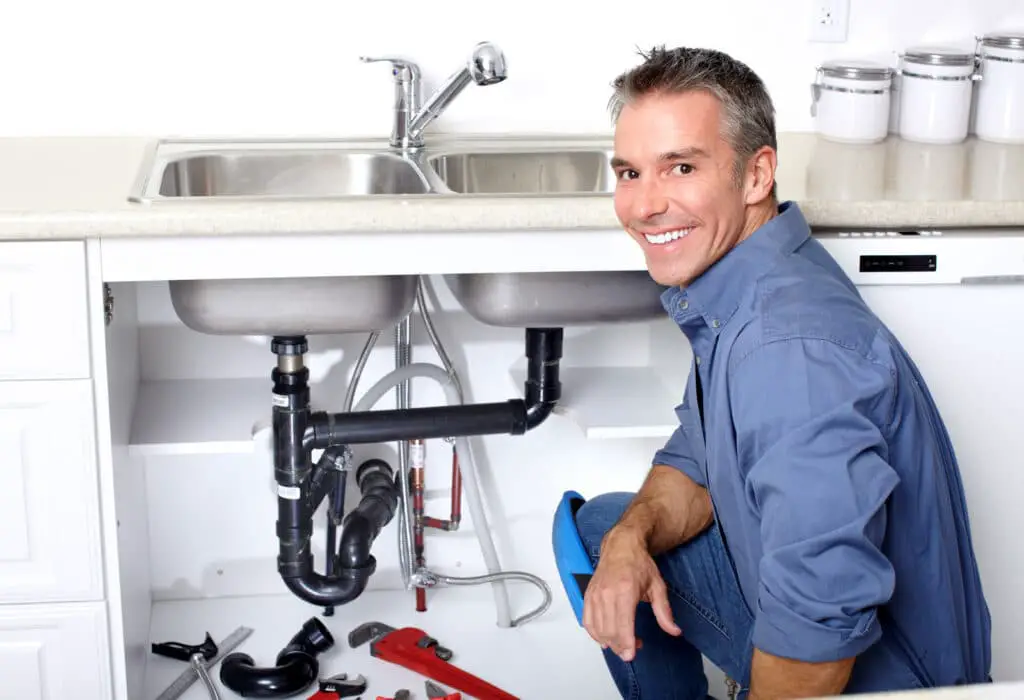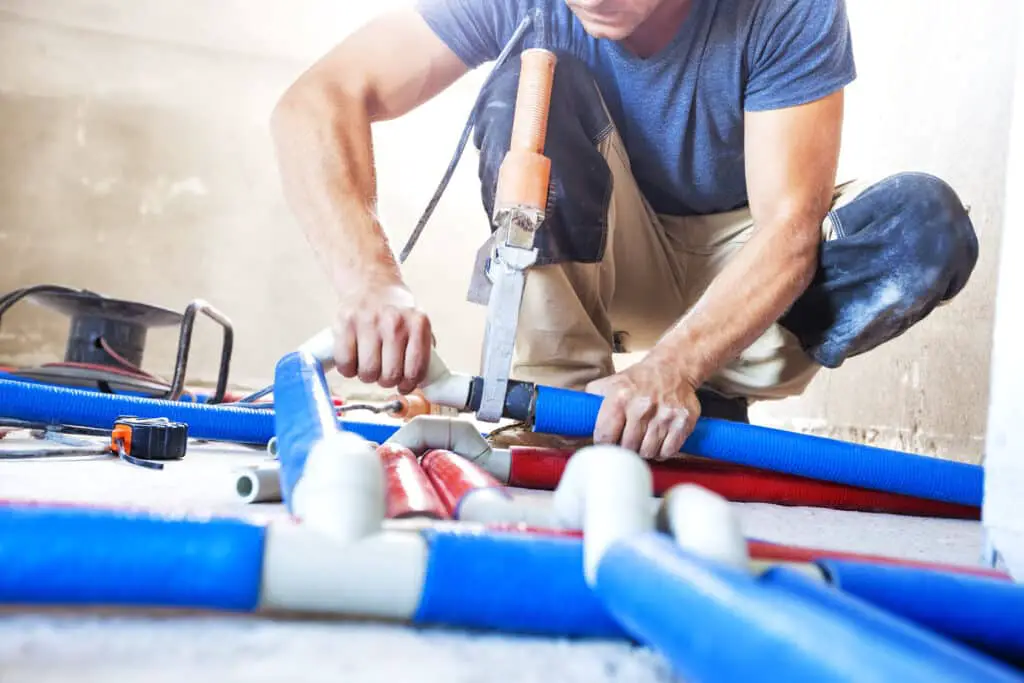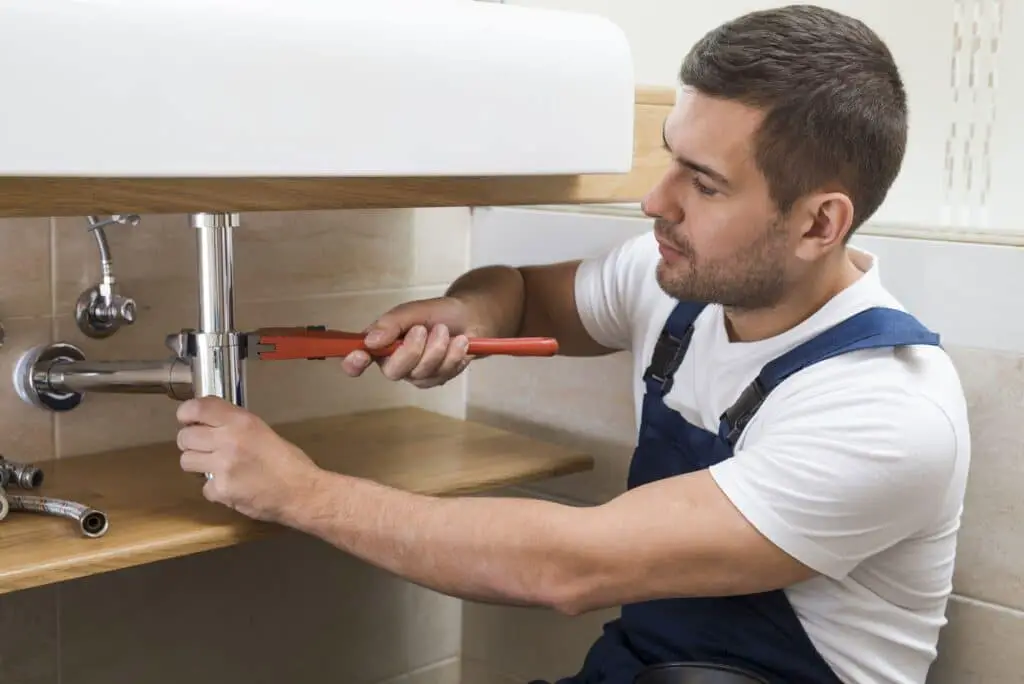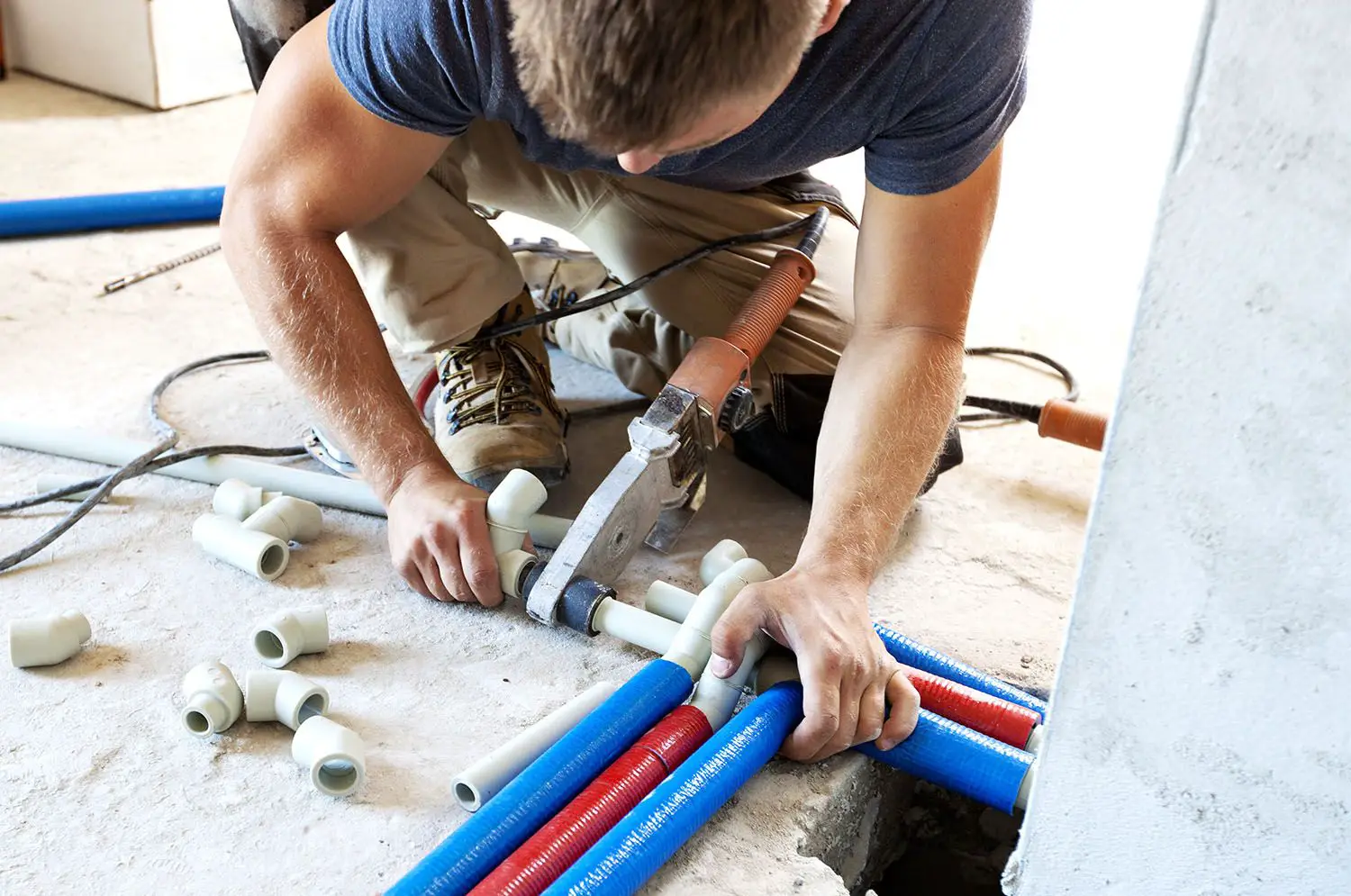When Was Galvanized Plumbing Discontinued
Introduction
When Was Galvanized Plumbing Discontinued: Galvanized plumbing, once a commonly used material in residential and commercial plumbing systems, has undergone significant changes over the years. However, due to its limitations and potential risks, the use of galvanized plumbing has been largely discontinued in modern construction. In this article, we will explore when galvanized plumbing was discontinued, the reasons behind its decline, and the alternatives that have taken its place.
Galvanized plumbing, introduced in the late 1800s, was initially a popular choice due to its durability and resistance to corrosion. It consists of steel pipes coated with a layer of zinc to protect against rust and corrosion. This protective layer extends the lifespan of the pipes and ensures reliable water supply. For many decades, galvanized plumbing was the go-to option for plumbing installations in homes, offices, and other buildings.
However, as time passed, the limitations of galvanized plumbing became apparent. One major drawback is that the zinc coating gradually deteriorates, leading to the development of rust and corrosion on the interior of the pipes. Over time, this corrosion can result in reduced water flow, leaks, and even pipe failure. Additionally, the accumulation of rust and mineral deposits inside the pipes can negatively impact water quality, affecting taste and potentially introducing contaminants.
Recognizing these issues, plumbing industry professionals and building codes began to shift away from galvanized plumbing. The discontinuation of galvanized plumbing can be attributed to various factors, including advancements in plumbing technology, improved understanding of water quality, and the development of alternative materials.

Should I Replace Old Galvanized Plumbing?
Galvanized pipes can last up to 60 -70 years, put not always. Poor quality pipe or piping with poor galvanizing technique can fail in half the time, 30-40 years. If you are experiencing signs that your galvanized pipes are failing, it may be time to replace them.
One of the main reasons to replace old galvanized plumbing is its tendency to rust and corrode over time. As galvanized pipes age, the protective zinc coating deteriorates, exposing the underlying steel to water and moisture. This can lead to the development of rust and corrosion on the interior of the pipes. Resulting in reduced water flow, leaks, and potential pipe failure. These issues can cause significant damage to your home and necessitate costly repairs.
Another crucial factor to consider is water quality. As galvanized pipes corrode, rust and mineral deposits can accumulate inside, affecting the taste and potentially introducing contaminants into your drinking water. If you notice discolored water, a metallic taste, or frequent clogs in your plumbing. It may be an indication of deteriorating galvanized pipes.
It’s also important to assess the overall condition of your plumbing system. If you experience frequent leaks, water pressure problems, or have noticed signs of corrosion on the visible portions of your pipes. It’s likely that the galvanized plumbing is nearing the end of its lifespan. In such cases, replacing the old pipes can provide peace of mind and prevent further issues down the line.
Furthermore, if you’re planning to sell your home. It’s worth noting that galvanized plumbing can be a significant deterrent to potential buyers. Many homebuyers prefer properties with updated plumbing systems, as they offer improved reliability and water quality. By replacing old galvanized plumbing, you can enhance your home’s marketability and potentially increase its value.
Is Galvanized Plumbing Safe?
Galvanized steel will eventually start to corrode and can pose a hazard for drinking water. Which makes it unsafe for drinking water in the long run. The problem isn’t the zinc coating but lead and cadmium, two heavy metals that can exist in the zinc because of the galvanizing process.
Although galvanized plumbing has been widely utilized in both homes and businesses for decades. Its safety has recently come under scrutiny. Understanding the potential risks and taking appropriate measures is essential in determining whether galvanized plumbing is safe for your home or if replacement is necessary.
One of the main safety concerns with galvanized plumbing is the presence of lead. Lead was sometimes used to coat the inside of galvanized pipes in older buildings. Over time, as the pipes corrode, lead particles can leach into the water supply, posing health risks, particularly for children and pregnant women. If you suspect your galvanized plumbing may have lead components, it’s crucial to have your water tested for lead content.
Additionally, as galvanized pipes age, they are prone to rust and corrosion. This can result in pipe deterioration, leaks, and reduced water flow. If left unaddressed, these issues can cause significant damage to your property and may require costly repairs.
Another safety concern is the impact on water quality. As galvanized pipes corrode, rust and mineral deposits can accumulate inside. Affecting the taste and potentially introducing contaminants into the water supply. If you notice discolored water or a metallic taste. It may be an indication of deteriorating galvanized pipes compromising water quality.
When Did They Stop Using Galvanized Plumbing?
Galvanized pipes were still in use as late as 1990, despite the fact that lead water pipes were phased out in the 1960s. The corrosion caused by these pipes can build up in the water supply. An easy way to determine if a home has galvanized pipes is to look where the piping enters the home and scratch the piping.
The use of galvanized plumbing has decreased significantly over the years. With its discontinuation occurring at different times depending on various factors such as geographical location, industry practices, and building codes. Although it is difficult to determine when exactly galvanized plumbing was completely phased out. We can provide a rough timeline of its gradual decline.
From the late 1800s through the mid 1900s, galvanized pipes were the standard in plumbing. It was the go-to choice for residential and commercial plumbing installations due to its durability and resistance to corrosion. However, as advancements in plumbing technology and materials emerged, the limitations of galvanized plumbing became apparent.
During the mid to late 20th century, particularly in the 1970s, the transition away from galvanized plumbing began gaining momentum. Copper and plastic pipes started to gain popularity as they offered improved performance, durability, and water quality compared to galvanized pipes. Copper pipes are corrosion-resistant, provide excellent water flow, and have a long lifespan. Plastic pipes, such as PVC (Polyvinyl Chloride) and PEX (Cross-linked Polyethylene). Became increasingly favored for their flexibility, cost-effectiveness, and resistance to corrosion.
Once safety and efficiency were prioritized in updated building codes. The usage of galvanized plumbing in new construction projects rapidly decreased. Many jurisdictions now require the use of modern materials like copper or plastic pipes in plumbing systems.
Is Copper Pipe Better Than Galvanized?
From all the advantages that come with using copper pipes for plumbing it is clear that copper pipes are a lot better than galvanized pipes. They are more durable, have a longer lifespan and don’t contain the harmful lead.
When comparing copper pipe to galvanized pipe. It becomes evident that copper offers several advantages that make it a preferable choice in modern plumbing systems.
One of the primary benefits of copper pipes is their superior durability. Copper is highly resistant to corrosion and rust, ensuring a longer lifespan compared to galvanized pipes. Galvanized pipes, on the other hand, are prone to rust and corrosion over time. Leading to reduced water flow, leaks, and potential pipe failure. By choosing copper pipes, you can minimize the risk of plumbing issues and enjoy a more reliable water supply.
Copper pipes also provide excellent water flow characteristics. They have smooth interiors that allow for efficient water movement, minimizing friction and pressure loss. In contrast, galvanized pipes tend to accumulate rust and mineral deposits on their interior surfaces over time, leading to reduced water flow. The unrestricted flow offered by copper pipes ensures optimal performance and water pressure throughout your plumbing system.
Another advantage of copper pipes is their compatibility with various water types. Copper is non-reactive and does not release contaminants or affect water quality. It is suitable for both hot and cold water applications, making it versatile for residential and commercial plumbing systems. Galvanized pipes, on the other hand, can introduce impurities and affect water taste due to corrosion and the potential presence of lead.

What Are The Benefits Of Galvanized Pipes?
Because of its rust-proof properties, galvanized pipe is useful both outdoors and inside. The zinc coating slows the process of corrosion and can make the pipe last for decades (in the right environment). This makes it ideal for marine applications and for transporting hot and cold water alike.
Galvanized pipes, despite their decreasing popularity in modern plumbing systems. Still offer certain benefits that make them suitable for specific applications. Here are some advantages of galvanized pipes:
Corrosion Resistance:
Galvanized pipes are coated with a layer of zinc, which provides excellent corrosion resistance. This protective coating helps to extend the lifespan of the pipes and prevents rust and corrosion, particularly in areas with aggressive water or soil conditions.
Durability:
Galvanized pipes are known for their durability and ability to withstand harsh environments. They are less prone to damage from impact or external forces compared to other materials like plastic pipes. This makes galvanized pipes a preferred choice in applications where durability is crucial. Such as industrial settings or areas with high foot traffic.
Cost-Effective:
Galvanized pipes tend to be more cost-effective than some alternatives, particularly in initial installation costs. In comparison to copper or stainless steel pipes, the material is affordable. Making it a viable option for large-scale plumbing projects on a tight budget.
Longevity:
When properly maintained, galvanized pipes have a long lifespan. The zinc coating helps protect the steel core from rust and corrosion, contributing to the longevity of the pipes. This can be advantageous in situations where frequent maintenance or replacement is not feasible or desirable.
High Temperature Resistance:
Galvanized pipes can withstand high temperatures, making them suitable for applications that involve hot water or steam. The zinc coating helps prevent the pipes from deforming or deteriorating due to heat exposure, ensuring their integrity over time.
Low Maintenance:
Galvanized pipes require minimal maintenance. Once installed, they generally do not require routine upkeep or special care. This can be advantageous in situations where accessibility for maintenance or repairs is challenging, such as underground or hard-to-reach plumbing installations.
It’s important to note that while galvanized pipes offer these benefits, there are also notable drawbacks to consider. Over time, the zinc coating can deteriorate, leading to rust, corrosion, and potential water quality issues. Galvanized pipes also have a narrower diameter than other materials, which can result in reduced water flow compared to alternatives like copper or plastic pipes.
Ultimately, the decision to use galvanized pipes should be based on the specific requirements of the plumbing project, considering factors such as water conditions, cost considerations, and the expected lifespan of the system. Consulting with a plumbing professional can help determine whether galvanized pipes are the right choice for your particular application.
When Was Galvanized Plumbing Commonly Used?
Galvanized plumbing was commonly used from the late 1800s through the mid-1900s. It gained popularity as a durable and corrosion-resistant option for residential, commercial, and industrial plumbing systems during that time.
Galvanized plumbing revolutionized the industry by addressing the issues of corrosion and rust that plagued earlier plumbing materials. Steel that has been galvanized receives a zinc coating, creating galvanized pipes. This zinc coating acts as a protective barrier, preventing the steel from coming into direct contact with water and reducing the risk of corrosion.
During the late 19th century, galvanized plumbing became widely adopted due to its reliability and longevity. It offered an improvement over earlier materials such as cast iron or lead pipes, which were more susceptible to corrosion, leaks, and health risks. Galvanized pipes quickly became the standard choice for water supply and distribution systems in buildings, ranging from homes to commercial establishments.
The popularity of galvanized plumbing continued well into the mid-20th century. All sorts of buildings, from residences to offices to factories to public works projects, employed galvanized pipes during this time period. Its durability, resistance to corrosion, and availability made it a trusted choice for plumbers and contractors.
When Did The Transition Away From Galvanized Plumbing Begin?
The transition away from galvanized plumbing began gaining momentum during the mid-20th century, particularly in the 1960s and 1970s. This period marked a shift in plumbing practices as advancements in materials and increased awareness of the limitations of galvanized pipes prompted the industry to explore alternative options.
Several factors contributed to the transition away from galvanized plumbing during this time. One primary factor was the emergence of copper pipes as a popular alternative. Copper pipes offered superior corrosion resistance, durability, and better water flow compared to galvanized pipes. Copper also became more readily available and cost-effective, making it a viable choice for plumbing installations.
Another significant factor was the growing awareness of water quality concerns associated with galvanized pipes. Over time, the zinc coating on galvanized pipes can deteriorate, leading to rust and corrosion, which can impact water quality and introduce contaminants. As awareness of these issues increased, there was a greater emphasis on using materials that would not compromise water safety and taste.
Additionally, advancements in plastic plumbing materials, such as PVC (Polyvinyl Chloride) and PEX (Cross-linked Polyethylene), further accelerated the transition away from galvanized plumbing. These plastic pipes offered advantages such as flexibility, ease of installation, resistance to corrosion, and compatibility with different water types.
What Are The Alternatives To Galvanized Plumbing?
Several alternatives to galvanized plumbing have gained popularity in modern plumbing systems. These alternatives offer improved performance, durability, and water quality. Some common substitutes are listed below.
Copper Pipes:
Copper pipes are widely regarded as a superior alternative to galvanized plumbing. They are highly durable, corrosion-resistant, and have a long lifespan. Copper pipes offer excellent water flow, are compatible with various water types, and are suitable for both hot and cold water applications. They serve a vital role in both domestic and industrial plumbing systems.
Plastic Pipes (PVC and PEX):
Plastic pipes, such as PVC (Polyvinyl Chloride) and PEX (Cross-linked Polyethylene), have gained popularity due to their flexibility, ease of installation, and resistance to corrosion. PVC pipes are rigid and commonly used for drainage and venting systems. PEX pipes, on the other hand, are flexible and ideal for water supply lines. Plastic pipes are cost-effective and offer good water flow characteristics.
Stainless Steel Pipes:
Stainless steel pipes provide excellent durability and corrosion resistance, making them a suitable alternative to galvanized plumbing. They find widespread use in a variety of commercial and industrial contexts where durability and reliability are of paramount importance. High-pressure and high-temperature systems are ideal for stainless steel pipes.
CPVC Pipes:
Chlorinated Polyvinyl Chloride (CPVC) pipes are a variation of PVC pipes that have been chlorinated to enhance their heat resistance. CPVC pipes are commonly used in hot water supply systems, offering better temperature and pressure capabilities compared to regular PVC pipes.
Cross-linked Polyethylene (PEX) Pipes:
PEX pipes have gained popularity for their flexibility, ease of installation, and resistance to corrosion and freezing. They can be used for plumbing, radiant heating, and even snow melting systems, as they can handle both hot and cold water.
When considering alternatives to galvanized plumbing, it is important to assess the specific requirements of your plumbing system, including factors such as water quality, temperature, pressure, and local building codes. Consulting with a licensed plumbing professional can help determine the most suitable alternative for your specific needs and ensure a reliable and efficient plumbing system.

Conclusion
Galvanized piping was phased out at different times, making it difficult to provide a firm deadline for its complete elimination. However, the transition away from galvanized plumbing gained momentum during the mid to late 20th century, particularly in the 1960s and 1970s. This period marked a shift in plumbing practices as the industry recognized the limitations of galvanized pipes and explored alternative options.
Advancements in plumbing technology, such as the emergence of copper pipes, played a significant role in the decline of galvanized plumbing. Copper pipes offered superior corrosion resistance, durability, and better water flow characteristics, making them a preferred choice. Plastic pipes, including PVC and PEX, also gained popularity due to their flexibility, ease of installation, and resistance to corrosion.
Building codes and regulations were updated to reflect the need for more modern and durable plumbing materials, further contributing to the discontinuation of galvanized plumbing in new construction projects. The focus on safety, efficiency, and water quality prompted the industry to prioritize the use of materials like copper, PVC, PEX, and other suitable alternatives.








